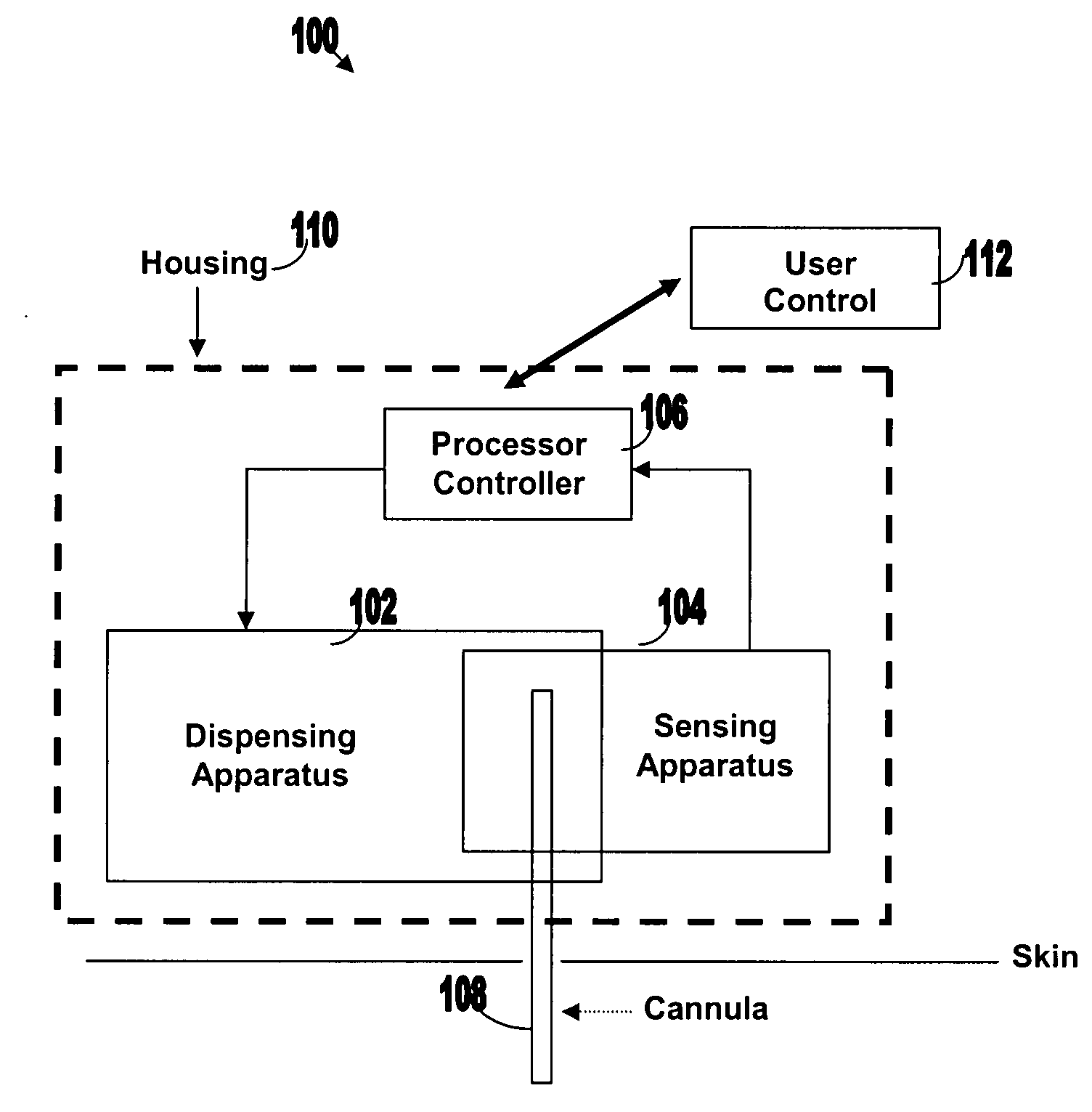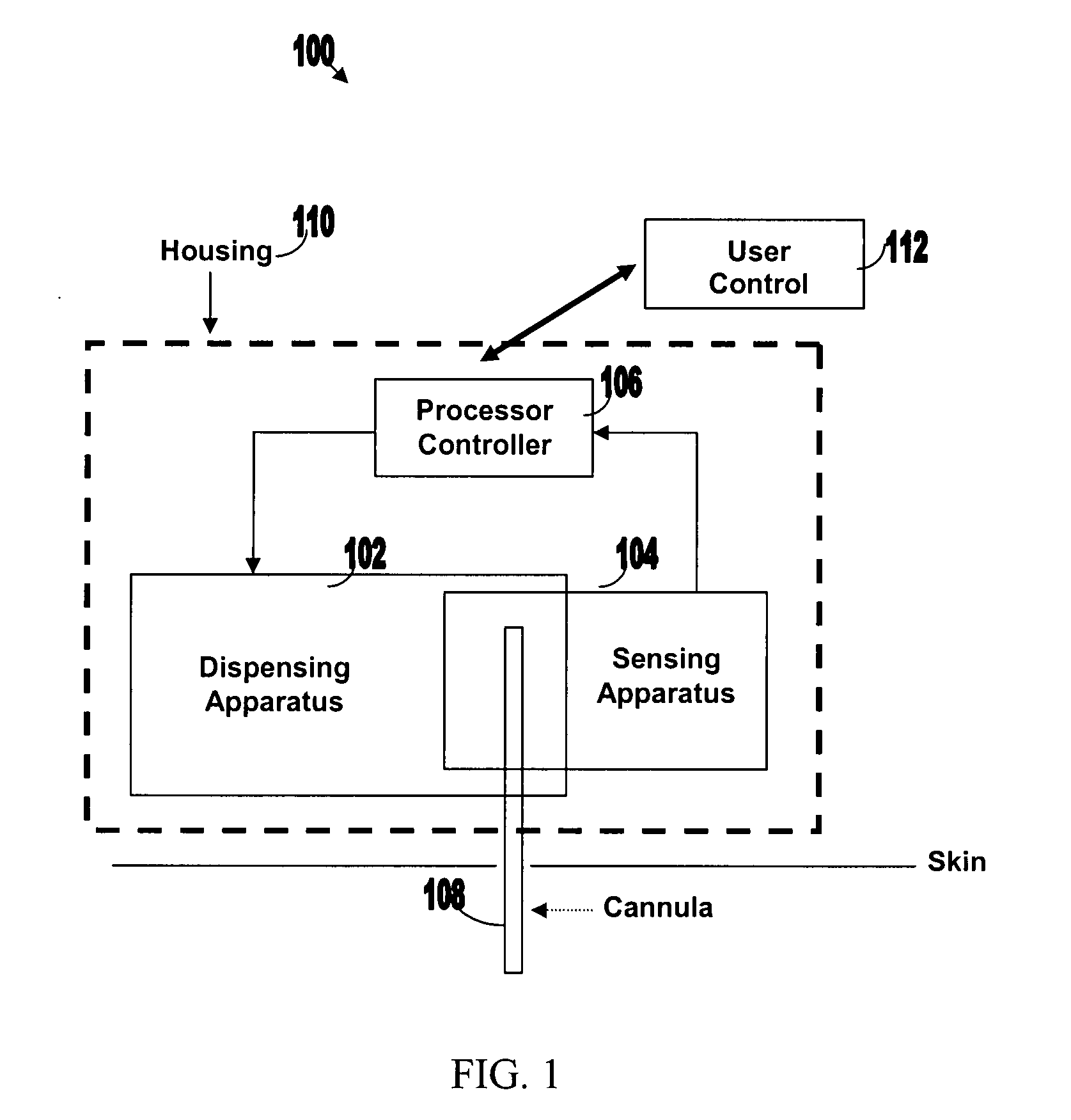Systems and methods for sensing analyte and dispensing therapeutic fluid
a technology of analyte and therapeutic fluid, which is applied in the field of glucose level regulation methods and devices, can solve the problems of increased rates of coronary heart disease, peripheral vascular disease and stroke, burden on patients, and difficult to achieve and maintain near-normal blood glucose concentrations in many patients
- Summary
- Abstract
- Description
- Claims
- Application Information
AI Technical Summary
Benefits of technology
Problems solved by technology
Method used
Image
Examples
Embodiment Construction
[0050]FIG. 1 illustrates various components of an exemplary closed loop system 100. Closed loop system 100 within the dashed frame may include dispensing apparatus 102, sensing apparatus 104, processor-controller apparatus 106 and cannula 108. All units are preferably enclosed within a single, common housing 110, which can be attached to the patient's skin. A single cannula 108, comprising a tubular body including a semi-permeable membrane, may be used to penetrate the skin and allows both fluid delivery to the patient's body and sensing of analytes within the patient's body. Processor-controller apparatus 106 can receive inputs from the sensing apparatus (i.e. analyte concentration) and after processing the data, may control the dispensing apparatus to dispense fluid accordingly.
[0051]The semi-closed loop (open loop) may include, in addition to the components disclosed for the closed-loop system, user control unit 112 (shown outside housing 110). This unit may be used for remote or...
PUM
 Login to View More
Login to View More Abstract
Description
Claims
Application Information
 Login to View More
Login to View More - R&D
- Intellectual Property
- Life Sciences
- Materials
- Tech Scout
- Unparalleled Data Quality
- Higher Quality Content
- 60% Fewer Hallucinations
Browse by: Latest US Patents, China's latest patents, Technical Efficacy Thesaurus, Application Domain, Technology Topic, Popular Technical Reports.
© 2025 PatSnap. All rights reserved.Legal|Privacy policy|Modern Slavery Act Transparency Statement|Sitemap|About US| Contact US: help@patsnap.com



